Do dogs chew their food? How do I train my dog to chew its food? What happens if a dog does not chew its food?
Many such questions have been frequently raised by dog owners. This blog post will tell you all about it with 11 ways to handle it too.
Dogs don’t normally chew their food But they can be trained to do so. Read on to find out more.
Do Dogs Chew Their Food?
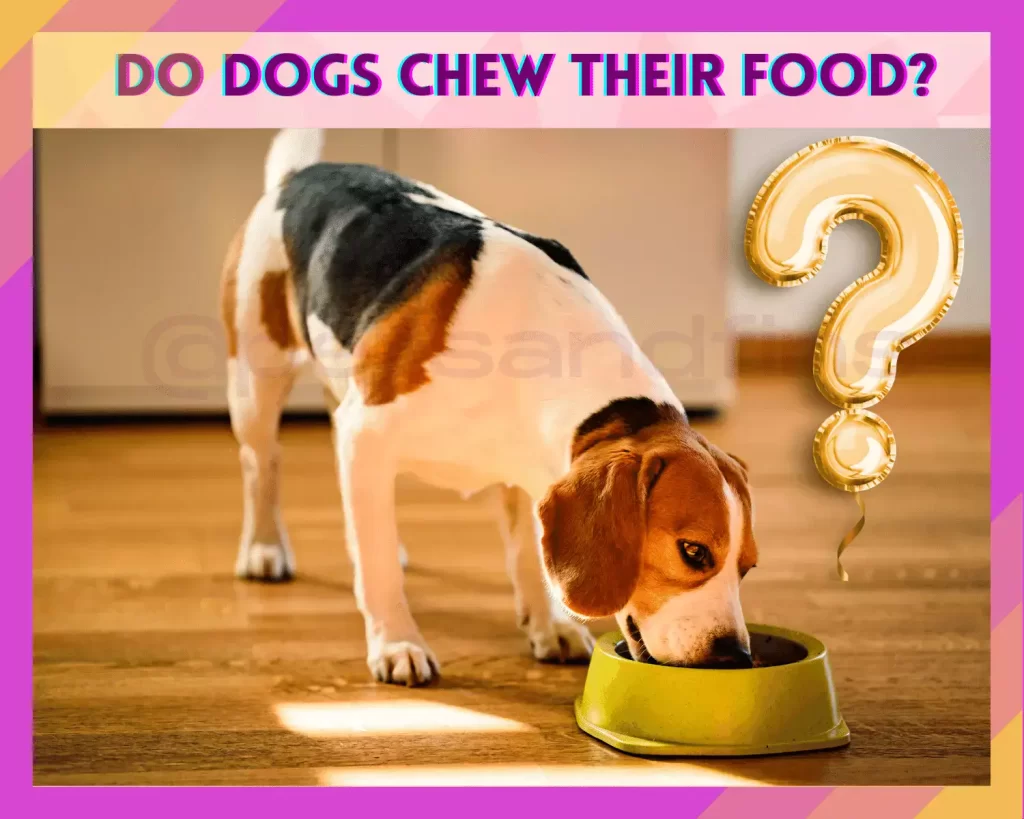
As a dog owner, you know your dog is an individual with his or her personality. But did you also know that dogs are not designed to chew their food?
They don’t have the same type of teeth as humans do when it comes to chewing. Dogs are creatures of habit. They love to eat their food quickly and can’t seem to resist the urge.
Dogs tend to gulp their food since they tend to think others may grab it. This is because of the way that dogs evolved, coming from wolves that would often fight for their prey in packs.
Dogs have learned to eat quickly if they want any chance at all of keeping what little food there was around.
However, this can be a problem when owners are not watching and the dog eats so fast he or she gets sick or even chokes on their vomit!
Dogs have been domesticated for centuries, but their instincts still prevail. When they see food or a treat being offered to them, they will instinctively take it and gulp it down before you can even blink.
Dogs have an esophagus much shorter than ours so the food slides down quickly without giving much time for chewing.
The canine throat is a tube that enables dogs to swallow food. The structure of the throat allows for expansion and contraction that helps with swallowing large pieces of food.
Dogs typically have a flexible tongue which aids in moving objects from one side of the mouth to another, as well as helping push food down into the esophagus.
Is It Normal For Dogs To Not Chew Their Food?
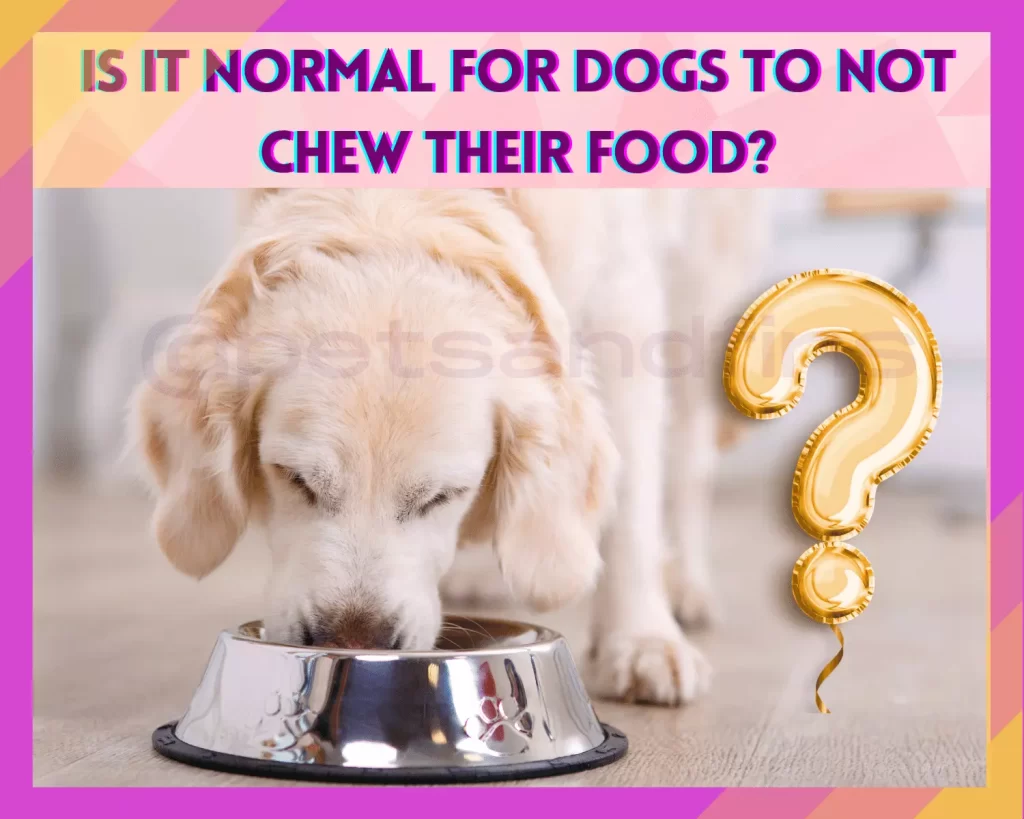
It is normal for dogs to not chew their food. They are a species that has evolved from wolves and they don’t have the same chewing needs as humans do. That being said, it is not good for them to eat without chewing their food properly.
Dogs can get sick if they swallow their food too quickly or take in too much air while eating quickly. Whilst some owners think it’s just a cute thing their dog does while eating, it’s important to remember the dangers of dogs gulping their food.
Why Don’t Dogs Chew Their Food?
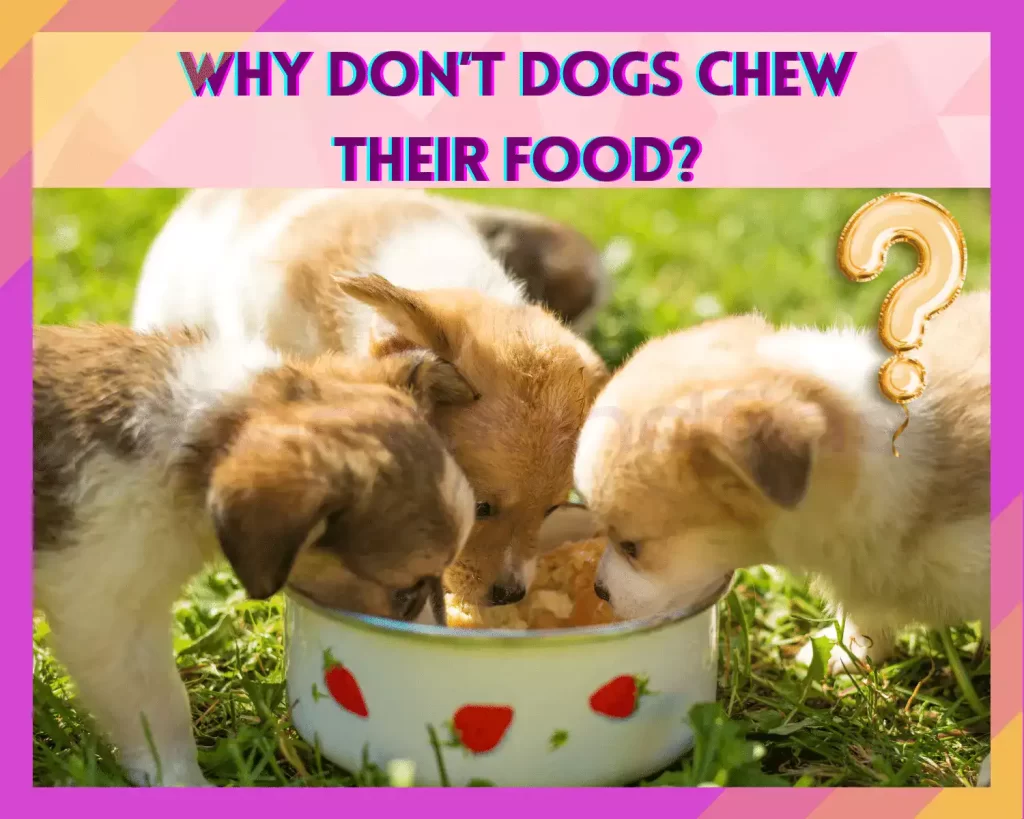
What’s the point of chewing your food when you can just swallow? Dogs are designed that way. Taste buds on a dog’s tongue are about 1/10 as many as humans and they don’t seem to care. The flavor of what we eat is detected by taste buds.
Our tongues contain 10,000 of them. However, dogs have only two thousand or so. Dogs don’t feel the need to taste their food like us humans do, and it takes them less time to swallow their food than it does for us to chew ours.
One of the most important parts of feeding your dog is understanding its digestive system. A dog’s digestion does not begin until food enters the stomach, unlike humans whose digestion begins in the mouth.
That Dogs are carnivores, which means that they are meant to eat meat. They have special teeth that are designed for tearing through flesh and not chewing it up as humans do.
Dogs have no flat surfaces on the back of their teeth, so they can’t grind up food like humans do.
Dogs use a combination of powerful jaw muscles to break down meat into tiny pieces that are easy for them to swallow. This is dog DNA. One thing that many people do not know is that dogs don’t have grinding molars as humans do.
All they have are pointed canine teeth which come in handy when tearing meat but cannot grind large pieces of food into smaller bits. If you’ve ever seen your dog chew on a bone or other hard object, you might be surprised by how much damage their teeth can do.
The sharp points on the ends of their molars don’t grind food like human teeth do- instead, they rip through flesh and crunch through bone. That’s how they are built. So dogs find it easy to swallow the kibble.
What Are The Consequences Of Dogs Not Chewing Their Food?
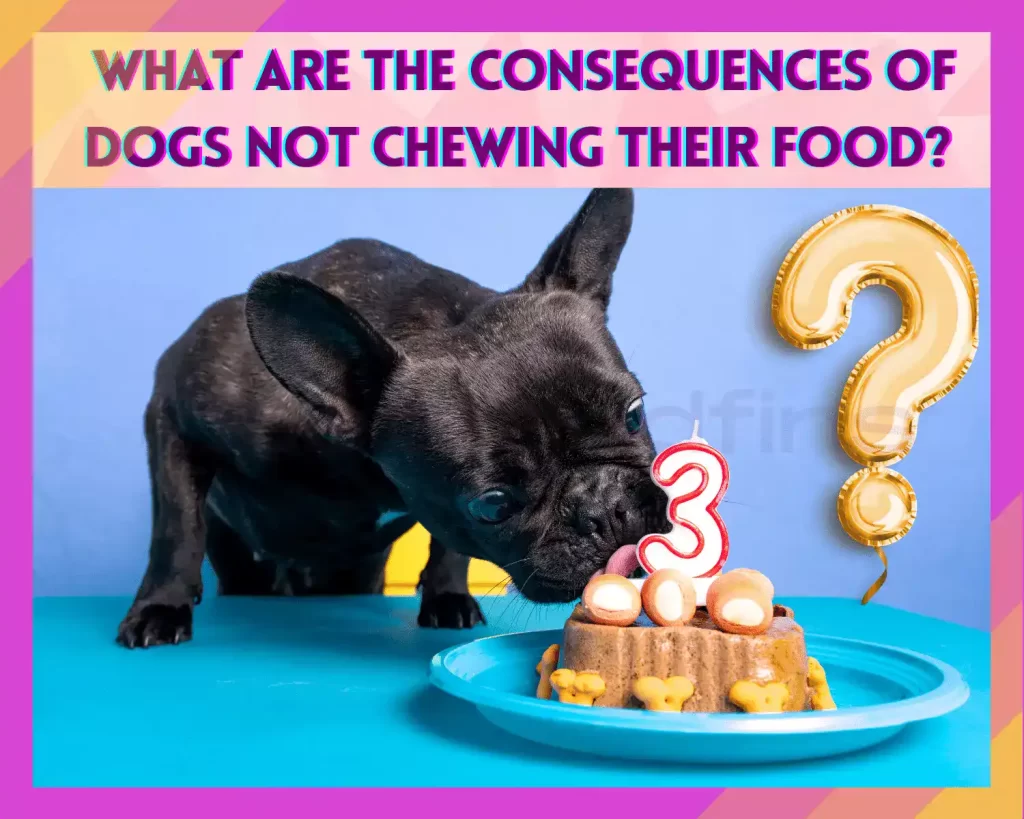
Dogs can have poor digestion if they don’t chew, which is why it’s important to help your pup break down their food with some tasty chews!
Many dogs are not wired to chew on the dry kibble they eat because their teeth never developed properly or because they don’t have enough saliva. This can lead to poor digestion and other health troubles like constipation.
The good news is that there are some simple solutions to this problem! Feeding your pup moist foods, adding more water to their diet, and making sure they drink plenty of fresh water will help them digest better.
It may be a bit more work than just tossing out a bag of dry food but it will make your pet feel so much better. Dogs can develop gas if they gulp their food, which means the air they swallow when eating is released from their body in the form of a burp or fart.
This can be very embarrassing for dog owners and unpleasant for anyone who has to smell it. Dogs who gulp their food may not chew enough causing indigestion which can result in gas.
Dogs are known to have sensitive stomachs and some dogs may be more prone to digestive problems than others.
When a dog swallows, the throat expands to let the food pass. as a result, more air passes through the mouth and enters the dog’s stomach. This also causes the bloat in their stomach.
Bloat can sometimes become a life-threatening condition that requires immediate attention. Larger dogs take in more air thus making the problem more severe and difficult to treat.
This bloated condition is also called gastric dilation volvulus (GDV). The condition can worsen when an overly full stomach twists on itself and shuts off blood flow to the organs. Without quick medical attention, it can be fatal within hours.
How Can You Get Your Dog To Chew Its Food? 11 Ways To Help Your Dog Learn To Chew:
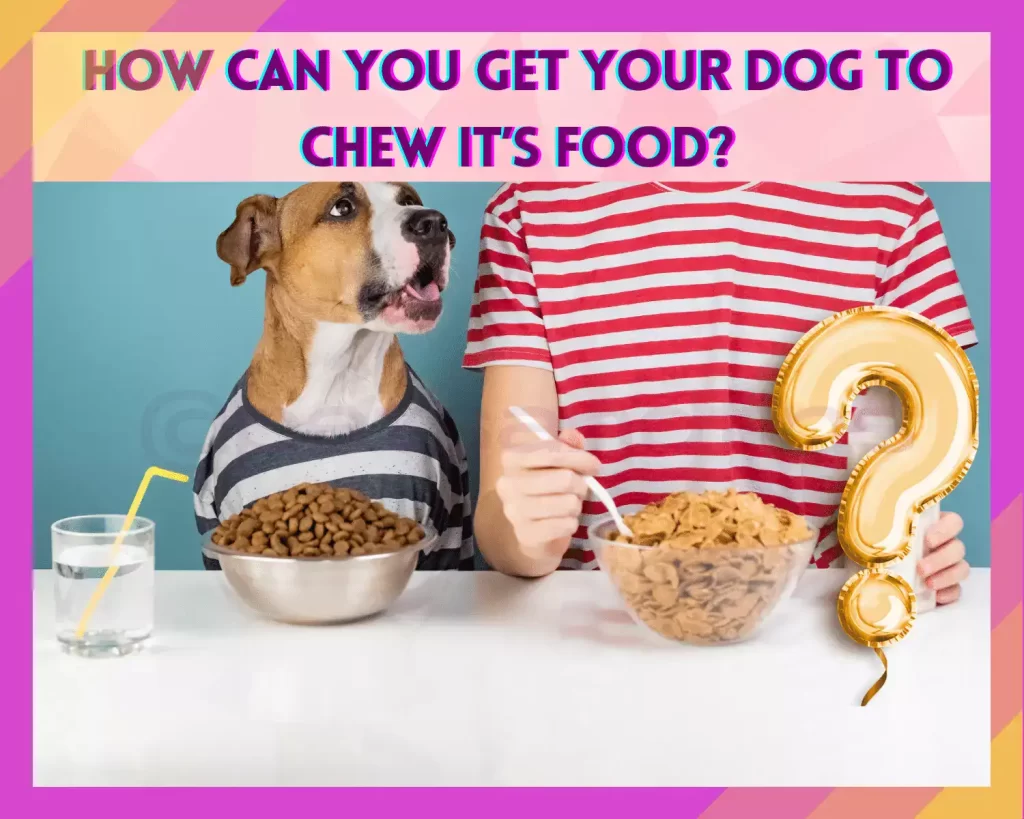
1. Use A Slow Bowl Feeder
A slow feeder has partitions that prevent the dog from grabbing large quantity of food at once, leaving them full and satisfied after their meal. Your dog can’t wolf down his entire meal in one sitting and forces him to eat in bits.
It also prevents bloat because they’re not gorging and taking in too much air in at once. The best thing about a slow feeder is that it encourages healthy eating habits in our woofy friends.
This feeder has just enough space for the dog to put in the tip of its mouth and use its tongue to take in the food and thus preventing the dog from opening its mouth wide open and taking in a lot of air.
2. Puzzle Feeder
A puzzle feeder is a great way to keep your dog entertained and engaged. The puzzle feeder has more partitions than a slow feeder bowl and allows the food to get distributed into different places in small quantities.
A puzzle feeder comes with more partitions than the slow feeder and divides the food into many more compartments. This makes them work harder to get their meal, which means they spend more time chewing.
Puzzle feeders are available in various shapes and sizes and the number of compartments vary. It provides a lot of choices to dog owners based on the dog breed, mouth size, etc.
3. Busy Box
A busy box is an easy DIY where you hide the food amongst various things like toys or clothes. This makes the dog search for its food and find bits and pieces thus forcing the dog to eat in small quantities and slowly.
This can be helpful If your dog eats too fast, and it will give them something to do while you’re gone. A busy box doesn’t take much time or money to make and is a great way to entertain your dog when alone.
Think of all the things in your room that could possibly fit inside a shoebox; tennis balls, squeaky toys, ropes tug toys- anything you’d like really!
Just make sure there are no small parts that could come off (like from stuffed animals) because these pose a threat.
4. A Treat Dispenser
People often ask me about what to do with their dogs when they are at work all day or away from home, and I’ve found the perfect solution- a treat dispenser! The best part is that there’s no need to leave your dog alone in the house when you’re not there because this can be done from anywhere.
If you have an Alexa or a smartphone you are dispensing a treat to your dog while you are away at work. Some treat dispensers even allow you to watch your dog while you are away. This way your dog is not super hungry when you feed it and the tendency to gulp goes down.
5. Smaller Portions At A Time
Did you know that giving your dog multiple smaller portions of their meal rather than one large portion can be beneficial?
It is true, the average adult dog should get around 2-3 cups of food per day. However, if they are given all of this food in one sitting it may cause digestive issues including bloat.
To avoid these potential problems make sure to give your dog several small meals throughout the day! This also gives them a chance to get exercise before each meal.
This is also a cheap, simple, and easy way. And an additional benefit is that the dog remains fuller for longer periods end when the hunger is lower it doesn’t tend to gulp that much.
6. Soaked Food
Dogs have been eating meat for a very long time. From the beginning, dogs have eaten meat that is soft and easy to chew on. Dog’s teeth are designed for tearing it apart.
As stated earlier dogs do not have molars to grind their food. As a result dry kibble takes more time to digest than meat.
Soaking the kibble or dry food makes it soft like meat. This is great for dogs who have dental issues, they can eat without causing pain to their gums.
It also helps with digestion because the water acts as a lubricant and breaks down any hard pieces of food that may be stuck in your dog’s teeth.
Soaking also helps increase the nutritional value of your dog’s food by allowing them to absorb more vital nutrients from their meal.
You should soak your dog’s food for at least 25 minutes. Remember, if nothing works, then soaking the food is one of the best solutions.
7. Weighted Ball
My dog used to gobble down his food in about 5 minutes and then look at me as if I was holding out on him. It always seemed like he was starved even though he just finished a meal.
Now, with this weighted ball, he has to eat small bites of food, one at a time which stops him from gulping. When you fill up a bowl with food and then add a weighted ball, it will push the kibble around and the dog will only be able to take little bits at a time.
The weighted ball occupies more space in the bowl, thus preventing the dog from gorging large portions. Don’t try using a regular tennis ball since the dog is going to just throw it out.
The weighted ball is called so because it’s heavy and cannot be taken out easily. Hence ‘weighted ball’.
8. Scatter
You might think that you have to feed your dog in a bowl, but it turns out there are many alternatives. For example, you can scatter the food all over the place and the dog needs to open its mouth only a bit since the quantity is less.
This is also great because then they get to walk around too. Since the food is scattered, there are two benefits. One, it psychologically slows down the dog because the dog thinks there is plenty to eat.
Two, since the dog finds small bits in each place it takes in less air in each mouthful.
9. Automatic Feeder With Timer
An automatic feeder with a timer is also a good option that dispenses small kibble at set time intervals. This can also be helpful if you are planning to leave your dog for an extended period of time.
You can set it up so that it will release food throughout the day, but not enough for them to gorge themselves and become sick or bloated. When leaving on vacation this could help ensure that your pet is fed while you’re gone!
The type of automatic feeder that has a timer gives the ability to program how often you want your dog’s meals released, as well as how much they receive at each mealtime.
These types of feeders offer great convenience and peace of mind knowing our furry friends are receiving their nutrition even when we are away from home.
10. Veterinary Assistance
In the most difficult of times, there is nothing more comforting than a veterinarian. If you’re reading this and feel like nothing is working for your dog’s health, it may be time to see a vet.
Vets are not just for sick animals. A lot of dogs suffer from eating too much food or drinking too much water in a short period, which can be very dangerous if they eat too quickly.
It is important to get your dog checked out by a vet if you notice that he gorges himself on his dinner. Vets can help your pet avoid this by giving him medication so he does bloat etc and even help you with other methods which we may not know.
11. Trainer
Dogs are not always the best at eating, some eat too fast and might even choke! You may have tried several things to slow them down. But these methods can be ineffective in training your dog to “eat slowly.”
If you want a more permanent solution to this problem, consider hiring a professional trainer. A qualified trainer will teach your dog how to eat slowly with rewards and other methods.
It does take time and patience but it pays off in the long run by having a happier and healthier pet!

Wrapping Up
Dogs don’t chew their food. They swallow it whole and then digest it in the stomach. You can train a pup from a very young age not to swallow its food by rewarding him when he chews.
A lot of praise when he chews his kibble is a good thing too. If you keep these tips in mind, your pet will be much healthier than if you just left everything up to chance!
A healthy dog is less maintenance and expense. More, than all of this, a longer lifespan for the lovable woofy mate means you enjoy his company longer.

